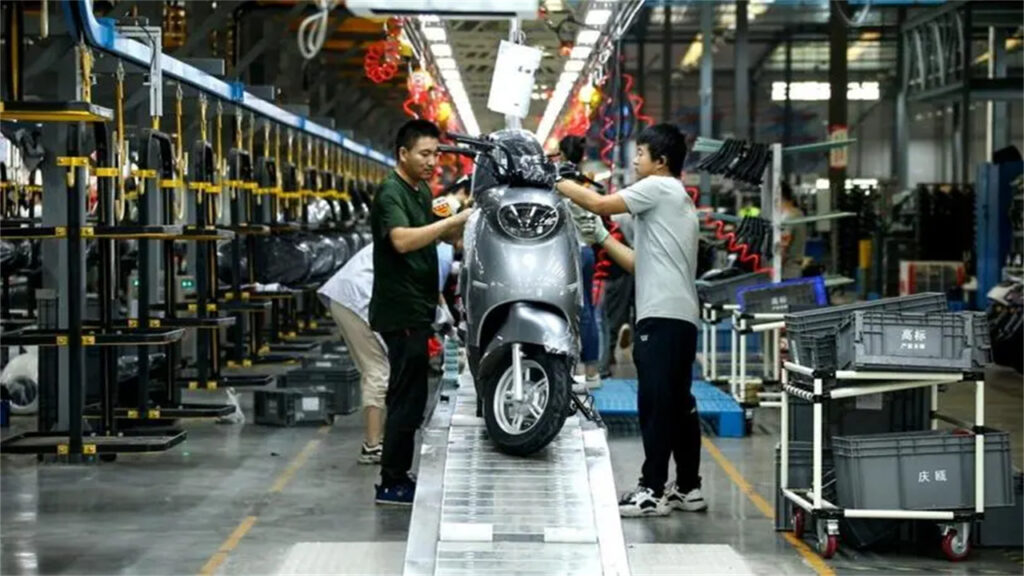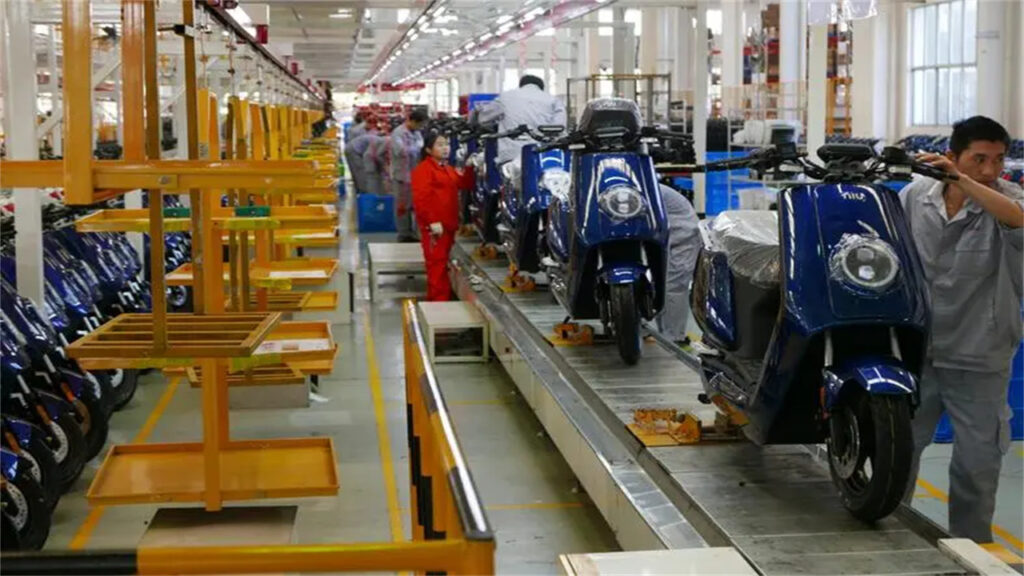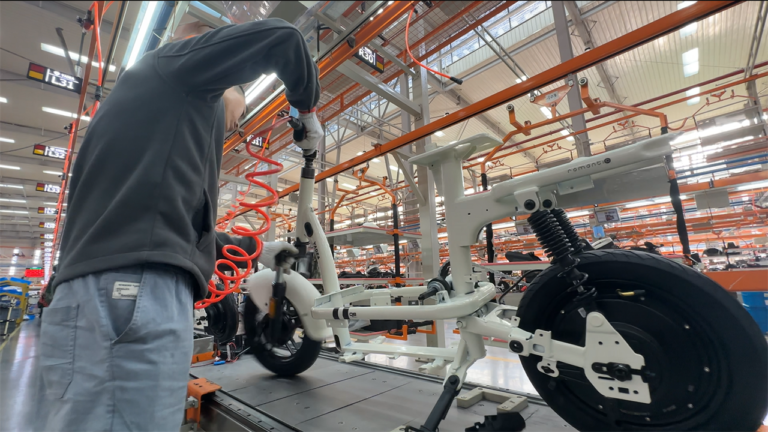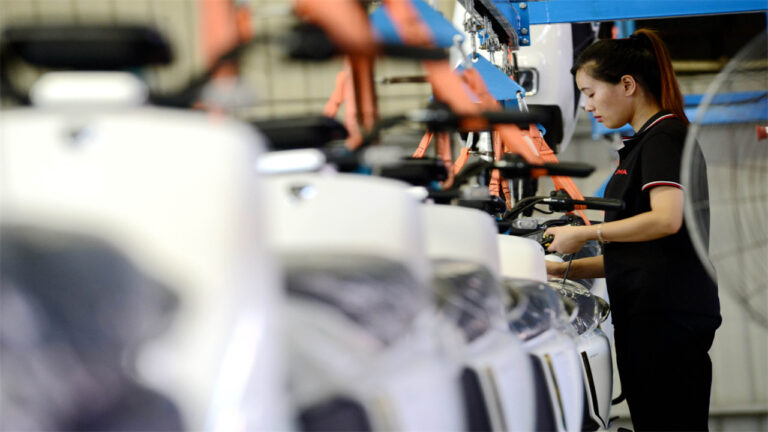2 Wheel Motorcycle Production Line

Suitable to Assemble/Produce 2 wheel Motorcycles, 2 wheel Scooters, 2 wheel Electric-cycles, 2 wheel E-Bikes, Bicycles, and so on.

Ensuring product quality during the production process on a 2-wheel motorcycle assembly line involves several specific applications and advantages:
- Automated Assembly Processes:
Robotic arms and automated machinery, such as automatic screw machines and welding robots, efficiently perform various assembly tasks. This enhances production efficiency and consistency while minimizing human error. - Intelligent Quality Control:
Machine vision systems are employed for detecting and controlling the quality of components, and sensors monitor the motorcycle’s parameters in real-time. This improves product quality and consistency, identifying and addressing production issues promptly. - Data Analysis and Optimization:
Production data is analyzed to understand the operational status and efficiency of the assembly line, facilitating continuous improvements. This optimizes the production line’s efficiency and quality. - Tracking and Management Systems:
These systems provide comprehensive oversight and control over the production process, quickly identifying and resolving issues. This increases the transparency and traceability of the production line. - Man-Machine Collaboration:
Combining manual operations with automated equipment allows for precise adjustments and operations. This leverages the flexibility of human workers and the precision of machines, enhancing product quality. - Automated Inspection Devices:
Automatic inspection devices are installed at critical points in the assembly line to monitor product quality in real-time. This ensures that each component meets quality standards. - Automated Storage and Logistics Systems:
These systems automate the supply of parts and optimize the production process. This reduces labor costs and increases production efficiency. - Information Management Systems:
The assembly line is often integrated with information management systems that provide real-time monitoring and analysis of production data. This streamlines the production process and improves response times.

These applications result in advantages such as increased production efficiency, reduced human error, enhanced product quality, cost reduction, improved transparency and traceability of the production line, and increased responsiveness to market changes.





